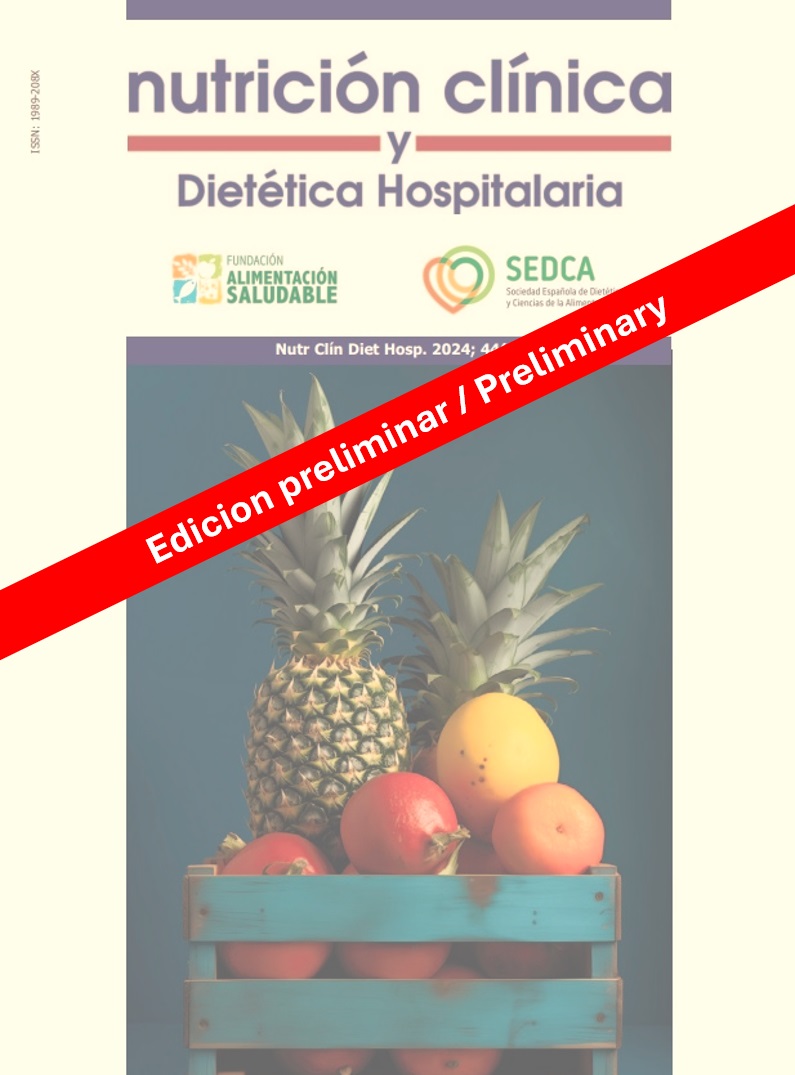From Manual to Digital: Transforming Hospital Nutrition with Nutri-has-Pro Application
DOI:
https://doi.org/10.12873/451musnadyPalabras clave:
food composition, malnutrition, energy requirements, nutritional medical therapy, nutrition softwareResumen
Abstract: Background: Hospital malnutrition is a serious issue, often caused by inadequate food intake and underlying diseases. In Makassar, malnutrition in hospitals is 28.1%, higher than provincial and national levels. This can lead to more extended hospital stays, higher costs, and increased risks of complications. To improve care, the Nutrihas-Pro app was developed to help plan patient meals more efficiently. Automatically calculating an individual's energy requirements saves time and reduces errors, leading to better patient outcomes.; Methods: The study uses an experimental design with repeated measures to compare two methods (manual vs. app). The research was conducted over four weeks at Dr. Wahidin Sudirohusodo Hospital, Makassar. A sample of 30 participants (Residents from the Clinical Nutrition Specialist Program) were selected based on purposive sampling. In stage 1, each sample was given 2 cases of malnutrition patients to perform according to the manual calculation procedure; 2 weeks later, the same participants performed the same cases by application.; Results: The study revealed a significant difference in time efficiency between the Nutrihas-Pro app and the manual method (89.53 ± 17.52 seconds vs. 297.5 ± 39.08 seconds, p=0.000). However, both methods showed similar accuracy in calculating energy requirements, with no statistically significant difference in results (p=0.096), demonstrating that the Nutrihas-Pro app is both faster and equally accurate. Conclusions: The Nutrihas-Pro App reduced the time required for meal planning by more than 60-70%, making it a valuable tool for clinical nutritionists, especially in time-constrained environments.
Referencias
P. Guenter et al., “Malnutrition Diagnoses and Associated Outcomes in Hospitalized Patients: United States, 2018,” 2021. doi: 10.1002/ncp.10771.
M. Simadibrata et al., “High-Protein Dietary Supplementation and Nutritional Status Improvement of Malnourished Patients in Hospital Care,” 2021. doi: 10.24871/2222021147-153.
A. Alim, A. Agustang, and A. Adam, “Transformation of Consumption Behavior of the Poor in the Case of Malnutrition: Health Sociology Study With Participatory Approach in Makassar City, Indonesia,” 2021. doi: 10.3889/oamjms.2021.6417.
M. Kapsokefalou et al., “Food Composition at Present: New Challenges,” Nutrients, 2019, doi: 10.3390/nu11081714.
A. Jiomekong, “Learning Food Composition Knowledge From Scientific Literature,” 2023, doi: 10.21203/rs.3.rs-2779745/v1.
T. Eftimov, P. Korošec, and B. K. Seljak, “StandFood: Standardization of Foods Using a Semi-Automatic System for Classifying and Describing Foods According to FoodEx2,” Nutrients, 2017, doi: 10.3390/nu9060542.
A. R. Santos, “The Role of Digital Marketing in Shaping Students’ Attitudes Towards Health Care Professions,” 2024. doi: 10.32479/irmm.16131.
S. Z. Gilbert, C. L. Morrison, Q. J. Chen, J. Punian, J. T. Bernstein, and M. Jessri, “Algorithm-Based Mapping of Products in a Branded Canadian Food and Beverage Database to Their Equivalents in Health Canada’s Canadian Nutrient File,” Front Nutr, 2023, doi: 10.3389/fnut.2022.1013516.
A. I. Stoumpos, F. Kitsios, and M. A. Talias, “Digital Transformation in Healthcare: Technology Acceptance and Its Applications,” Int J Environ Res Public Health, vol. 20, no. 4, Feb. 2023, doi: 10.3390/IJERPH20043407.
M. Maringer et al., “User-Documented Food Consumption Data From Publicly Available Apps: An Analysis of Opportunities and Challenges for Nutrition Research,” Nutr J, 2018, doi: 10.1186/s12937-018-0366-6.
I. S. Wardani and E. Fiorintina, “Building Critical Thinking Skills of 21st Century Students Through Problem Based Learning Model,” 2023. doi: 10.23887/jpiundiksha.v12i3.58789.
L. M. König, C. Attig, T. Franke, and B. Renner, “Barriers to and Facilitators for Using Nutrition Apps: A Scoping Review and Conceptual Framework (Preprint),” 2020, doi: 10.2196/preprints.20037.
R. Z. Franco, R. Fallaize, M. Weech, F. Hwang, and J. A. Lovegrove, “Effectiveness of Web-Based Personalized Nutrition Advice for Adults Using the eNutri Web App: Evidence From the EatWellUK Randomized Controlled Trial,” J Med Internet Res, 2022, doi: 10.2196/29088.
F. Schäfer et al., “Attitudes and Expectations of Clinical Research Participants Toward Digital Health and Mobile Dietary Assessment Tools: Cross-Sectional Survey Study,” Front Digit Health, 2022, doi: 10.3389/fdgth.2022.794908.
O. F. Jimoh et al., “Comparing Diet and Exercise Monitoring Using Smartphone App and Paper Diary: A Two-Phase Intervention Study,” JMIR Mhealth Uhealth, 2018, doi: 10.2196/mhealth.7702.
L. Thornton et al., “Measurement Properties of Smartphone Approaches to Assess Diet, Alcohol Use, and Tobacco Use: Systematic Review,” JMIR Mhealth Uhealth, 2022, doi: 10.2196/27337.
D. Trtovac and J. Lee, “The Use of Technology in Identifying Hospital Malnutrition: Scoping Review,” JMIR Med Inform, 2018, doi: 10.2196/medinform.7601.
J. C. Moses, S. Adibi, S. M. S. Islam, N. Wickramasinghe, and L. Nguyen, “Application of Smartphone Technologies in Disease Monitoring: A Systematic Review,” 2021. doi: 10.3390/healthcare9070889.
K.-L. Cassidy et al., “Comparing a Clinician-Assisted and App-Supported Behavioral Activation Intervention to Promote Brain Health and Well-Being in Frontline Care,” 2020. doi: 10.1017/s1041610220001325.
I. S. Rahardjo and R. Wardani, “Analysis of Medical Worker Satisfaction Level Towards the Implementation of Digitalized E-Health Applications of Health Services at Member of Indonesian Clinic Association in Kediri 2021,” 2021. doi: 10.30994/jqph.v5i1.271.
Descargas
Publicado
Número
Sección
Categorías
Licencia
Derechos de autor 2025 Nutrición Clínica y Dietética Hospitalaria

Esta obra está bajo una licencia internacional Creative Commons Atribución-NoComercial-SinDerivadas 4.0.
Los lectores pueden utilizar los textos publicados de acuerdo con la definición BOAI (Budapest Open Access Initiative)



